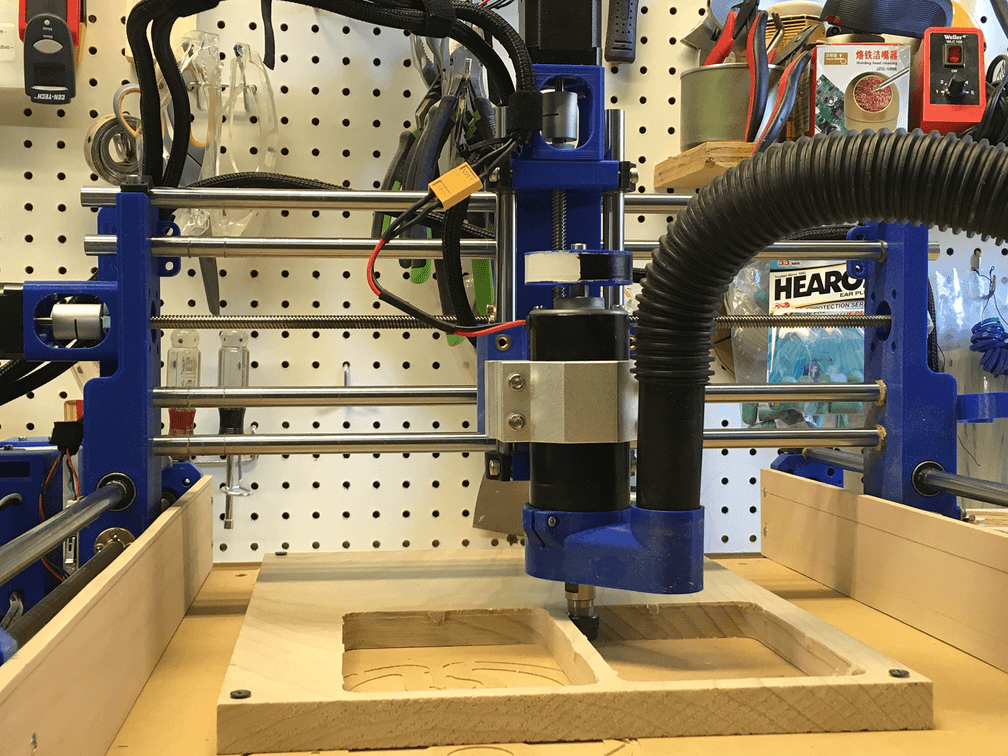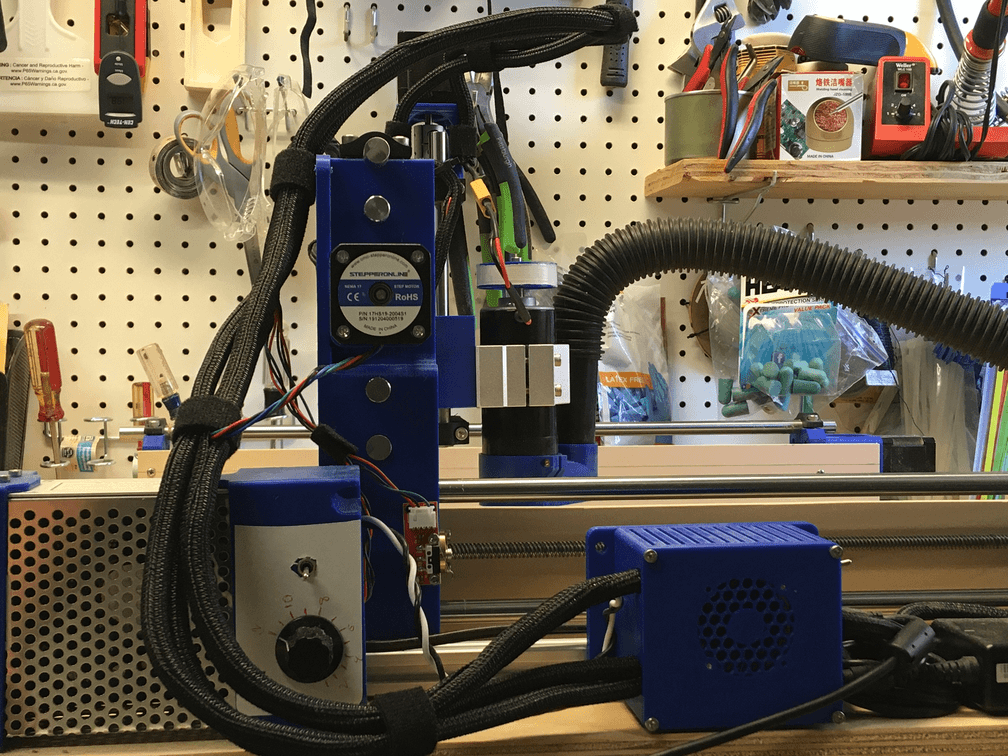I'm always on the hunt for a new way to measure the stiffness of my setup. I find that testing the flex of individual parts does not translate that well to the overall flex in the system. It captures the upper bound but the end result is usually stiffer.
Here is my latest attempt to visualize it. I blocked the end of my spindle against a block of wood and zeroed out the system, then moved the axis against the block till the steppers started to slip. That point should be around 12 kg of force on the axis. I can tell you that is well more than the force needed to snap a 1/8 bit!
Anyway by taking a photo before and after the motion and creating a gif we can visualize the flex in the system. On the X axis you can see there is some flex on the Y rails, and it appears most of the flex is in the bearings on the X axis. In the Y direction you can see that most of the flex is between the Z rails and the motor mount.
In both directions the motors stepped 2 mm before skipping a step. That should be fairly accurate, one step should work out to 0.04 mm if my calculations are correct, and we should not be able to get more than one step off before the motor fails. So the max flex in the system under loads well beyond what my normal bit can handle is less than 2mm. That is still quite a bit of flex but I don't know that it is too far beyond what a shapoko or other hobby machine can handle.
I may work up the nerve to sacrifice a router bit to see what the flex is at the limit right before the bit breaks. That would be a more realistic test, and it would be nice to know what real world forces the bit can handle. However I'm not in a hurry to break a bit...
Interestingly enough the right most Y stepper failed long before the left stepper. I could continue to jog the left axis another mm after the right would not move any more. I suspect there is a power imbalance on the motors, or it is possible the z carriage is shifted just a bit to the right. Anyway something to think about. I suspect it does not matter that much. As long as the machine is strong enough to rapidly decelerate without skipping steps it is strong enough. The actual cutting force is small in the grand scheme of things.


 David Tucker
David Tucker
Discussions
Become a Hackaday.io Member
Create an account to leave a comment. Already have an account? Log In.